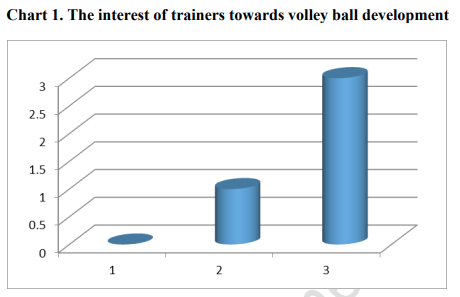Investigating the major problems that affect the development of youth volleyball projects: in the case of lemo worda hadiya zone.
Abstract
The general objective of the study was to investigating factors that affect the development of youth volleyball project in case of Lemo worda in Hadiya zone. To this effect, the researcher was used the descriptive survey method which is strongly believed to be the most appropriate for addressing the intended purpose of this study. The research populations include volleyball coaches, sport administrator officer from Hadiya zone and Lemo woreda and volleyball players. Total population are 4 coaches, 40 volleyball players, 12 sports office administrative respondents were select from the study site with simple random sampling. Four instruments such as questionnaire, interview, observation and document analysis were used to gather the data. The descriptive analysis of the data was analyzed by using both qualitative and quantitative methods, such as frequency counts, percentage, mean, standard deviation chart and descriptive statements. The findings of the study indicated that the following major problems were dominant in the Lemo wored youth volleyball sport projects: less emphasis given to the value of sport in general and youth volleyball development in particular, by the general public, the investors and sport officers at all levels, absence of transparent and accountable administration, lack of cooperation among the concerned stallholders, very low popular participation, absence of permanent fund for the projects, lack of sufficient volleyball courts in the area and less emphasis given to even the existing ones, lack of trained sport professionals that could supplement the problems man power in woreda levels, less access and opportunity or available structure that could invite the private investors to attract to. As a general solution to the identified problems greater emphasis has to be given to the youth volleyball project in the area so that it could be possible to recruit adult players in the near future and this could also be a fundamental base for the sustainability of the major adult volleyball project in the Woreda.
Downloads
References
Bompa, T.O (1994). Theory and methodology of training: the key to athletic training.
Champaign: Human Kinetics.
Bompa, T.O (1999). Per iodization: theory and methodology of training. Champaign:
Human Kinetic
Carling, Reilly, & Williams,2009: sport games and performance.
David C.Watt (1998). Sports Management and Administration published in USA and Canada
by Roue Ledge
David Levinson and Karen Christensen 2005 BERKSHIRE ENCYCLOPEDIAOF World Sport
VOLUME2 Berkshire Publishing Group LLC U.S.A
Edward F. Voltmer.et al (1979). The Organization and Administration of Physical Education
(5thEdition)
FIVB Volleyball official rules 2017-2020
International Olympic Committee (2010). Sport Administration Manual. Rome: Hurford
Enterprises Ltd.
Kumar, R. (1999). Research Methodology .London: SAGE Publication Ltd.
Michael O'Hara (2010): Volleyball - Fastest Growing Sport in the World. Create Space
Independent Publishing Platform
Parks,S.(2000)Planning:TheFoundationsofEffectiveCoaching,
Sharkey, B. (2002). Fitness & health (5th ed.). Champaign, IL: Human Kinetics The rector of Eszterházy Károly College EKC Líceum Press Published in (2015)
Volleyball History”. Bvbinfo.com Archived from the original on 19 September 2012.
Retrieved 1 August 2012
WondimuTadesse (2009). “Alternative and Traditional Assessment.” (unpublished): Addis Ababas
http://www.topendsports.com/world/lists/greatest-all-time/volleyball.htm (201















